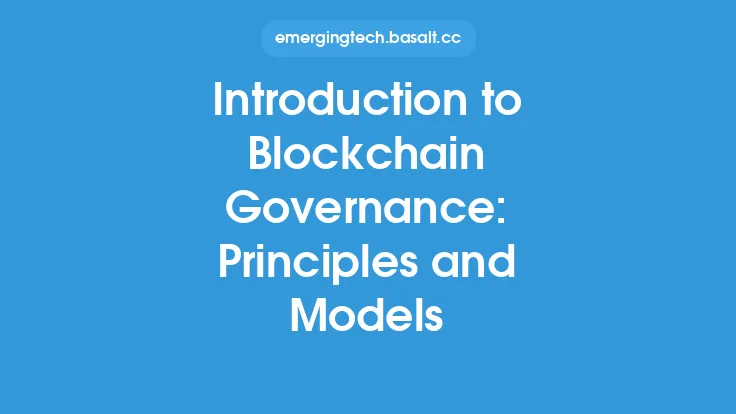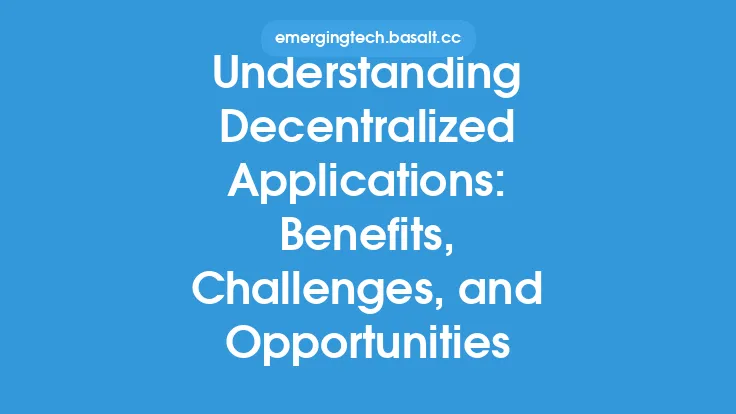The concept of governance in blockchain technology is multifaceted and crucial for the sustainability and success of blockchain networks. At the heart of blockchain governance lies the structure, which can be broadly categorized into centralized and decentralized systems. Understanding the differences between these two structures is essential for grasping how blockchain networks operate, make decisions, and evolve over time.
Introduction to Centralized Governance
Centralized governance in the context of blockchain refers to a system where decision-making authority is concentrated in a single entity or a small group of entities. This entity could be a company, a foundation, or any other form of organization. In a centralized governance structure, the central authority has control over the network's protocol, the implementation of updates, and often the validation process of transactions. This structure is more akin to traditional organizational models where power and decision-making are hierarchical. The advantages of centralized governance include faster decision-making, more efficient implementation of changes, and clearer lines of responsibility. However, it also means that the network may not be fully decentralized, which could undermine the principles of blockchain technology, such as immutability and resistance to censorship.
Introduction to Decentralized Governance
Decentralized governance, on the other hand, distributes decision-making authority among a wide range of participants. This can include node operators, miners, developers, and even users of the blockchain network. In a decentralized system, no single entity has control over the network, and decisions are made through a consensus mechanism that involves various stakeholders. Decentralized governance is more in line with the original ethos of blockchain, promoting transparency, security, and community involvement. It ensures that the network remains open, permissionless, and resistant to central points of failure or control. However, decentralized governance can be slower and more complex, as reaching consensus among a large and diverse group of stakeholders can be challenging.
Comparison of Centralized and Decentralized Governance Structures
When comparing centralized and decentralized governance structures, several key factors come into play. Decentralized systems are generally more secure and less susceptible to censorship or manipulation, as control is distributed and no single point of failure exists. Centralized systems, while potentially faster in terms of decision-making and implementation, risk undermining the core principles of blockchain by introducing central points of control. Another critical aspect is scalability; centralized systems might offer more straightforward paths to scaling due to their ability to implement changes quickly, whereas decentralized systems may face challenges in achieving consensus on scaling solutions.
Implications of Governance Structures on Blockchain Networks
The choice between centralized and decentralized governance structures has profound implications for blockchain networks. For instance, a decentralized governance model can lead to a more community-driven development process, where updates and changes are based on broad consensus rather than the whims of a central authority. This can foster a sense of ownership and participation among community members, potentially leading to a more vibrant and engaged ecosystem. On the other hand, centralized governance might result in more rapid development and deployment of new features, as decisions do not require broad consensus. However, this could come at the cost of community trust and the network's overall decentralization.
Challenges and Opportunities
Both centralized and decentralized governance structures come with their own set of challenges and opportunities. For decentralized systems, one of the significant challenges is achieving and maintaining consensus among a diverse group of stakeholders. This can lead to slower decision-making processes and potential conflicts. However, the opportunity for true decentralization, security, and community engagement is unparalleled. Centralized systems face challenges related to trust and the potential for abuse of power, but they also offer the opportunity for more efficient management and quicker adaptation to changing environments.
Conclusion
In conclusion, the governance structure of a blockchain network, whether centralized or decentralized, plays a critical role in its operation, security, and potential for growth. Understanding the nuances of these structures is essential for participants, developers, and users of blockchain technology. While centralized governance offers efficiency and speed, decentralized governance provides security, transparency, and adherence to the core principles of blockchain. As blockchain technology continues to evolve, the choice and implementation of governance structures will remain a vital aspect of its development and adoption. By recognizing the strengths and weaknesses of both centralized and decentralized approaches, stakeholders can work towards creating governance models that balance efficiency with decentralization, security, and community involvement.





